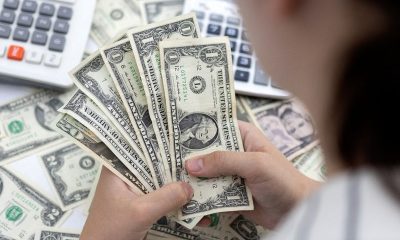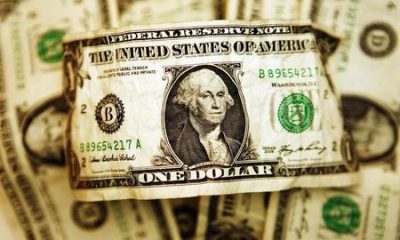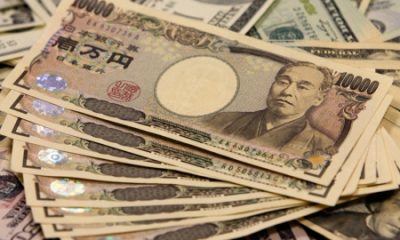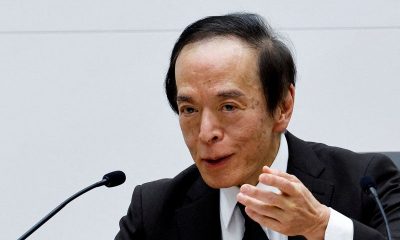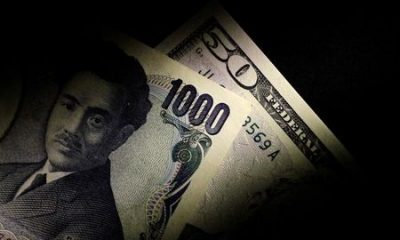Forex
Analysis-How China talked markets out of a run on the yuan

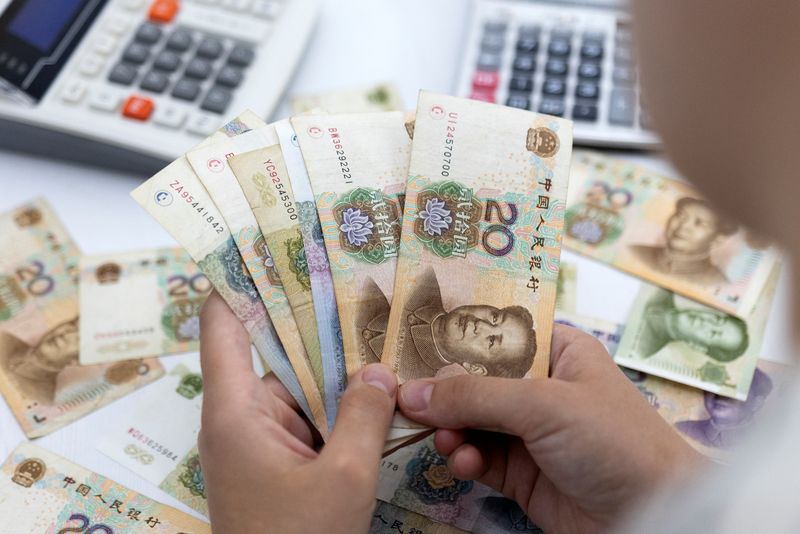
© Reuters. FILE PHOTO: Woman holds Chinese Yuan banknotes in this illustration taken May 30, 2022. REUTERS/Dado Ruvic/Illustration/File Photo
SINGAPORE (Reuters) – In recent months, China has sought to stabilise the yuan by orchestrating buying by state banks and giving market guidance to bankers.
The strategy of moral suasion marks a sharp break from Beijing’s approach the last time the currency was on the ropes, in 2015.
Back then, the People’s Bank of China (PBOC) resorted to official intervention as the central bank burned $1 trillion in reserves to shore it up.
This year, as China’s economy wobbled and money left the country, the PBOC took a starkly different approach, defending the currency by signalling to markets what kind of selling it would and would not tolerate.
Interviews with 28 market participants show at least two dozen cases where regulators closely and frequently steered market participants through a range of co-ordinated actions this year to resist strong downward pressure on the yuan.
The PBOC and State Administration of Foreign Exchange, the currency regulator, did not respond to Reuters’ faxed questions about its approach. PBOC governor Pan Gongsheng has previously said regulators would prevent exchange rate overshooting risks and maintain stable FX market operations.
The strategy market participants and analysts described to Reuters has prevented a destabilising yuan slide.
However, they told Reuters that it has also chilled large parts of China’s foreign exchange market, crashing trading volumes and raising questions about the yuan’s chances of becoming a global reserve currency.
“The circumstances … at the moment are considerably more complicated because there are both domestic as well as global macroeconomic factors,” said Eswar Prasad, Tolani senior professor of international trade policy at Cornell University.
He described the PBOC’s use of “non-standard measures to intervene in foreign exchange markets” as a form of “triage” to stop the yuan falling too rapidly.
As the currency of the world’s second-largest economy and biggest exporter, the yuan’s value determines the price of goods around the world and trillions of dollars in capital flows. It also serves as a barometer of China’s challenges.
A Chinese forex regulator, speaking on condition of anonymity, said the currency’s value was ultimately determined by fundamentals and currently a product of how “effectively China can thwart decoupling”, a reference to Western efforts to reduce economic reliance on China.
Ten traders interviewed by Reuters said key warnings first emerged in June when the PBOC’s daily yuan guidance that determines its trading range for the day, known as the midpoint, started to diverge from market expectations.
In theory, the midpoint is based on contributions from 14 banks and referenced to the previous day’s trade and overnight moves, which should make it easy for markets to predict.
By August, however, the midpoint’s yawning deviation from trader estimates was read by the traders interviewed by Reuters as a signal the PBOC did not want the currency to go where markets were pushing it.
AGAINST THE TIDE
Managing a currency can be a white-knuckle ride. In 2015, China cut the yuan’s midpoint by 2%, with the PBOC saying it was a one-off move to bring the trading band in line with market pricing. Fearing further devaluations, however, investors sold Chinese assets, sending stocks and the yuan into freefall and forcing the bank to use reserves to stabilise the currency. This time, efforts to manage the yuan involved more targeted and specific directions to banks and currency market participants, according to the traders who spoke to Reuters.
For example, whenever momentum seemed against the yuan, state-owned banks quietly became buyers, the traders said. This generally happened around psychologically significant currency levels and seemed aimed at containing volatility. Those traders told Reuters that in late May they noticed state banks stepping in with two days of yuan buying after the currency hit its lowest then for 2023.
Similarly, state banks’ yuan buying intensified in December after Moody’s announced a cut in China’s ratings outlook. Individual traders were not able to estimate the size of buying nor was Reuters able to confirm whether such trading was directed by the central bank.
Official data shows no evidence the PBOC sold dollars outright as it did in 2015. However, market participants noted banks sold dollars acquired by currency swaps, which would not be seen in such data.
At the same time, smaller lenders have experienced increased “window guidance” or unofficial, verbal advice from regulators to have both banks and their clients reduce dollar holdings, according to six trader and banking sources.
In June and July, the China FX Market Self-Regulatory Framework, which is overseen by the PBOC, told major state-owned banks to cut dollar deposit rates, which would encourage exporters and households to switch dollar receipts into yuan, market watchers said.
WORKING THE PHONES The pressure on bankers has mirrored pressure on the yuan, which is down almost 2.8% against the dollar this year even though the benchmark lost 2.2%.
On Sept. 8, the yuan struck a 16-year low. A few days later, managers at eight major banks were summoned to Beijing to meet PBOC officials, according to five banking sources, two of whom attended the meeting. They were told companies wishing to buy more than $50 million would need approval from the PBOC, three sources said. Bankers were also told they needed to cut spot trading, stagger dollar buying and not hold net long dollar positions at the end of any trading day, two sources said.
Authorities also focused on monitoring exporters’ foreign exchange buying and selling plans given their large currency holdings and outsized sway on yuan moves.
In recent months, regulators have called banks and queried them with surveys on a near weekly basis on the intentions of exporter customers, according to officials at five banks who spoke to Reuters. Such calls had previously been sporadic and surveys sent only monthly.
The volume of yuan traded onshore slumped 73% from August’s level to a record low of 1.85 trillion yuan in October. That shows China’s bankers have heeded the call to reduce trading, particularly dollar buying, but also that the central bank’s efforts are chilling the market, analysts say.For now, however, the currency appears to have stabilised comfortably above September’s 16-year low.
Market players are unwilling to directly fight the PBOC — but nor are they willing to acquiesce entirely.
“I’ve been closely monitoring dollar prices this year, as I have dollar payments coming in every few weeks,” said one Shanghai-based exporter of electronic components surnamed Zhu. “The daily question has been: ‘Do I need to save them, or convert them back into yuan?'” So far, she has saved them on expectations of a better yuan price for her dollars.
Forex
Sterling slips as BoE holds rates; hawkish BOJ policymakers pause yen slide
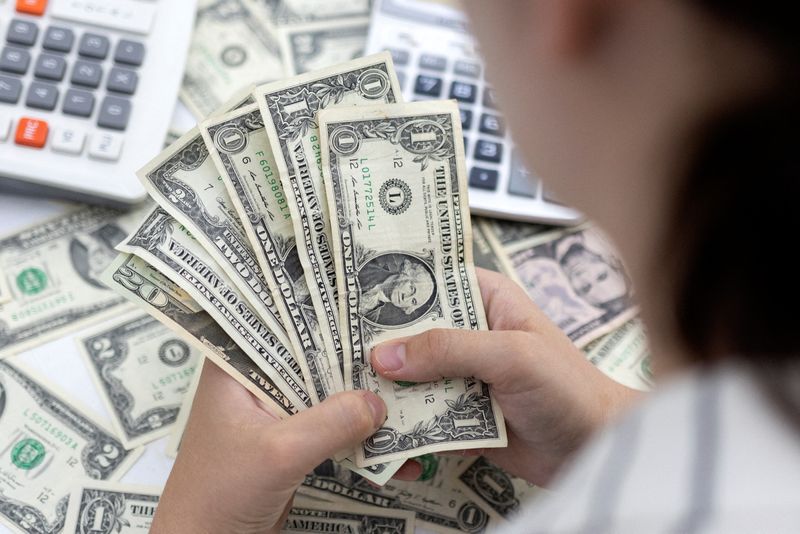
By Joice Alves
LONDON (Reuters) -The pound slipped on Thursday after the Bank of England paved the way for an interest rate reduction as a second official backed a cut, while hawkish opinions from Bank of Japan members helped slow the yen’s fall.
The rose as traders started to focus on U.S. inflation data due next week and its implications for Federal Reserve policy.
The BoE held its benchmark interest rate at 5.25%, as expected, but a second official on the Monetary Policy Committee backed a cut, in what was seen as another step towards the bank lowering interest rates.
BoE officials voted 7-2 to keep rates at a 16-year high. Deputy Governor Dave Ramsden joined Swati Dhingra in voting for a cut to 5%.
Sterling later steadied on the day at $1.2505, recovering losses after hitting a two-week low immediately after the BoE’s policy decision.
Investors have been watching for signs to firm their expectations on when cuts could come.
“It’s likely that we will need to cut bank rates over the coming quarters and make monetary policy somewhat less restrictive over the forecast period, possibly more so than currently priced into market rates,” BoE Governor Andrew Bailey told journalists.
He added that more data will be available before a BoE decision for the June meeting is made.
Money markets see a 75% chance of a first cut in August, with the odds of such a move coming in June at a 45% chance.
remove ads
.
“Sterling is recovering some of the fall made on the back of the BoE’s policy statement,” said Jane Foley, Head of FX Strategy at Rabobank.
“The dovish overtones will spark more optimism that the Bank may be ready to cut rates in June, though we expect that services sector inflation will result in a steady policy outcome until August”.
Elsewhere, the dollar has been slowly inching up against the Japanese yen after it fell 3.4% last week, its biggest weekly percentage drop since early December 2022.
The yen was flat on the day at 155.62 per dollar, with the Japanese currency briefly finding some support in the BOJ’s summary of opinions released on Thursday. The summary showed board members were overwhelmingly hawkish at their April policy meeting, with many calling for steady interest rate hikes.
The “BOJ appears to be hinting at the next rate hike, which could come in June or July as final results of wage negotiations come out,” said Charu Chanana, head of currency strategy at Saxo.
In the U.S., last week’s Fed policy meeting and weaker than forecast U.S. jobs growth have markets increasing bets for two rate cuts this year. But a chasm remains between Japan’s ultra-low yields and those in the United States.
Japan’s top currency diplomat Masato Kanda on Thursday reiterated a warning that Tokyo is ready to take action in the currency market.
Market players suspect Tokyo spent some $60 billion last week to stem the yen’s slide after it hit its weakest in 34-years against the dollar around 160 yen.
remove ads
.
The dollar index, which measures the greenback against a basket of currencies including the yen and the euro, edged 0.04% lower to 105.46, having touched a one-week high earlier.
Traders will be closely watching April U.S. producer price index (PPI) and the consumer price index (CPI) out next week for signs that inflation has resumed its downward trend toward the Fed’s 2% target rate.
China’s was about flat on the day at 7.2278, as data revealed China’s exports and imports returned to growth in April after contracting in the previous month.
That could mean a potential delay for rate cuts some analysts believe China would need to make to meet its 2024 GDP goal.
Forex
Dollar edges higher, helped by hawkish Fed speakers ; Sterling slips ahead of BOE

Investing.com – The U.S. dollar edged higher Thursday, trading in a tight range ahead of next week’s all-important U.S. inflation data, while the pound slipped ahead of the Bank of England’s policy-setting meeting.
At 04:35 ET (08:35 GMT), the Dollar Index, which tracks the greenback against a basket of six other currencies, traded 0.2% higher at 105.605, rebounding after last week’s one-month low.
Tight trading range ahead of US CPI
The dollar has steadied this week, after last week’s sharp losses, after a number of Fed officials have pushed back against the idea that rate cuts are a certainty this year.
Minneapolis Fed boss suggested on Tuesday that stubborn inflation and a robust economy could persuade the U.S. central bank to keep interest rates unchanged for the rest of this year.
Fed Bank of Boston President continued the theme on Wednesday, saying that the U.S. economy needs to cool to return inflation back to target.
There are more speakers due both Thursday and Friday, as well as weekly data.
However, trading ranges are likely to be limited ahead of next week’s April U.S. and, in particular, the , which traders will watch for signs that inflation has resumed its downward trend toward the Fed’s 2% target rate.
Sterling slips ahead of BOE meeting
In Europe, traded 0.2% lower to 1.2475, ahead of the latest rate-setting meeting.
The U.K. central bank is not expected to move interest rates later Thursday, and thus the big question is whether the officials signal that a cut will come in June, when the European Central Bank has already signalled it will.
remove ads
.
A cut is fully priced for August and last week sterling short positions rose to their largest since January 2023, so sterling could be volatile if post-meeting guidance doesn’t match up to the market’s expectations.
In Europe, traded 0.1% lower to 1.0732, trading largely unchanged given a light data calendar.
“It’s hard to see EUR/USD breaking far from 1.0750, unless the BoE is demonstrably dovish and GBP/USD drags EUR/USD lower with it,” said ana;ysts at ING, in a note.
Yen drifts lower despite rate hike talk
In Asia, rose 0.3% to 155.87, with the yen remaining weak despite hawkish opinions from Bank of Japan’s members.
The BOJ’s summary of opinions released earlier Thursday showed board members were overwhelmingly hawkish at their April policy meeting with many calling for steady interest rate hikes.
BOJ Governor Kazuo Ueda also warned that any inflationary pressures arising from weakness in the yen could invite monetary tightening by the central bank.
That said, the yen has still resumed its decline even after a couple bouts of suspected intervention.
rose 0.1% to 7.2260, with the yuan struggling to maintain earlier gains after data showed Chinese grew substantially more than expected in April, signaling some strength in domestic demand.
Forex
Asia FX muted, Japanese yen pauses losses after BOJ warning
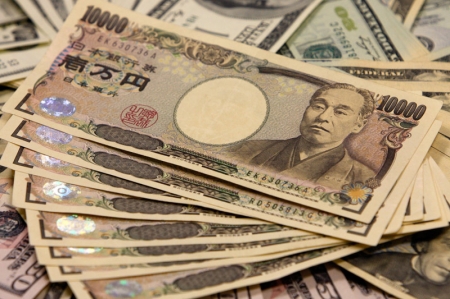
Investing.com– Most Asian currencies moved in a flat-to-low range on Thursday as markets sought more cues on U.S. interest rates from Federal Reserve officials and upcoming inflation data.
The Japanese yen saw some resilience, with the pair pausing its recent decline after somewhat hawkish comments from the Bank of Japan. Traders were also on guard over any more intervention in currency markets by the government.
Broader Asian currencies were muted as the dollar rebounded from recent losses this week, as a string of Fed officials warned that sticky inflation was likely to keep interest rates high for longer.
Japanese yen pauses losses, USDJPY hovers above 155
The Japanese yen’s USDJPY pair- which is inversely representative of strength in the yen- hovered around the mid-155s on Thursday, pausing its recent run of losses.
The pause came after BOJ Governor Kazuo Ueda warned that any inflationary pressures arising from weakness in the yen could invite monetary tightening by the central bank- changing his stance after stating last month that the yen’s recent declines did not directly impact inflation.
Ueda’s comments were sufficient in stemming losses in the yen, which was weakening even after the Japanese government seemingly intervened in currency markets last week.
Still, data for March spurred doubts over just how much headroom the BOJ actually had to tighten policy.
Chinese yuan trims losses as imports surge
The Chinese yuan’s trimmed some intraday gains after data showed Chinese grew substantially more than expected in April, signaling some strength in domestic demand.
remove ads
.
While also beat expectations, the spike in imports saw China’s grow less than expected. Still, the trade balance grew from a four-month low hit in the prior month.
While increased imports usually bode poorly for currencies, the yuan was supported by optimism over a potential economic recovery in China, which was supporting local consumption.
Dollar steadies with Fed speakers, inflation data on tap
Broader Asian currencies were muted, as the and steadied after a strong rebound this week.
Focus was squarely on more Fed speakers on Thursday and Friday, as well as key data due next week.
Doubts over U.S. interest rates kept most Asian currencies trading sideways on Thursday. The Australian dollar’s pair rose less than 0.1%, while the Singapore dollar’s and the South Korean won’s pairs were flat.
The Indian rupee’s pair moved little, but remained in sight of record highs hit in late-April.

 Forex2 years ago
Forex2 years agoForex Today: the dollar is gaining strength amid gloomy sentiment at the start of the Fed’s week

 Forex2 years ago
Forex2 years agoHow is the Australian dollar doing today?

 Forex1 year ago
Forex1 year agoUnbiased review of Pocket Option broker

 Forex2 years ago
Forex2 years agoDollar to pound sterling exchange rate today: Pound plummeted to its lowest since 1985

 Cryptocurrency2 years ago
Cryptocurrency2 years agoWhat happened in the crypto market – current events today

 World2 years ago
World2 years agoWhy are modern video games an art form?

 Stock Markets2 years ago
Stock Markets2 years agoMorgan Stanley: bear market rally to continue

 Economy2 years ago
Economy2 years agoCrude oil tankers double in price due to EU anti-Russian sanctions

